"Grandma" of the Cuban revolution. Sixty years of landing from the yacht "Granma"
In the 1956 year, before the start of the expedition to Cuba, Fidel Castro and other Cuban revolutionaries were in Mexico. Here they took refuge after they were forced to leave Cuba, after being amnestied by the Batista court. It was in Mexico that Fidel Castro met with Argentinian Ernesto Che Guevara. A young Argentine doctor at that time was in Mexico, fleeing here from neighboring Guatemala, where he participated in the revolutionary movement. Juan Manuel Marquez came to Mexico - he was older than his other comrades, he had already exceeded forty years, but Marquez's everyday and political experience turned out to be very useful.
A little later, Camilo Cienfuegos (1932-1959) arrived from the USA - a hereditary revolutionary who came from a family of Spanish anarchists who migrated after the victory of Franco to Cuba. From 1954, Cienfuegos participated in the student movement in Cuba, was in opposition to the dictator Batista, and then was forced to move to the United States, where he became acquainted with the ideas of Fidel Castro. Subsequently, Camilo Cienfuegos became a real legend of the Cuban revolution, at a certain time no less popular than Fidel and Che Guevara. Suffice it to say that it was Camilo Cienfuegos that Ernesto Che Guevara dedicated his book Guerrilla War.
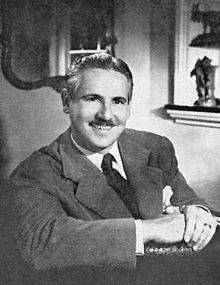 Back in August, 1956, Fidel Castro met in the US town of McAllen with former Cuban President Carlos Prio Socarras (pictured), negatively tuned to the Batista regime and promised to help the leader of the revolutionary movement financially. Sokarras promised to give 50 thousand dollars to Fidel. This money, according to Castro, should have been enough to purchase a yacht that would deliver revolutionaries to Cuba, and to purchase weapons. In September, in Miami, Carlos Prio Socarras met again with the revolutionary representative Juan Marquez. The ex-president gave Marquez twenty thousand dollars. Soon Fidel, passing in the area of the Mexican town Tuxpan, saw a small yacht. She had a very touching name - “Granma”, that is, “Grandma”. Although the yacht was in poor condition, Fidel decided to buy it - apparently, the name played a role. With such a peaceful name of the yacht, you could fearlessly make the long-awaited raid on Cuba.
Back in August, 1956, Fidel Castro met in the US town of McAllen with former Cuban President Carlos Prio Socarras (pictured), negatively tuned to the Batista regime and promised to help the leader of the revolutionary movement financially. Sokarras promised to give 50 thousand dollars to Fidel. This money, according to Castro, should have been enough to purchase a yacht that would deliver revolutionaries to Cuba, and to purchase weapons. In September, in Miami, Carlos Prio Socarras met again with the revolutionary representative Juan Marquez. The ex-president gave Marquez twenty thousand dollars. Soon Fidel, passing in the area of the Mexican town Tuxpan, saw a small yacht. She had a very touching name - “Granma”, that is, “Grandma”. Although the yacht was in poor condition, Fidel decided to buy it - apparently, the name played a role. With such a peaceful name of the yacht, you could fearlessly make the long-awaited raid on Cuba. Of course, from the point of view of common sense, "Granma" was in no way suitable for a landing operation. The length of the yacht was thirteen meters, width - five meters. She was launched back in 1943 year. Ten years later, in 1953, she hit a hurricane and sank. Then she was raised, slightly repaired, but on the whole the Granma remained completely unsightly yacht. This explains its abandonment - it is unlikely a reasonable person would buy it from the owner. But Fidel Castro once again followed the call of the heart. He realized that it was Granma that would lead his squad to a long-awaited victory over Batista.
It was possible to establish who is the owner of "Granma". He was an American entrepreneur Werner Green. He agreed to sell the yacht for a small amount of money, but he made a condition that the buyer bought a small house in the Tuxpan area along with the yacht. The buyer was a Mexican businessman Antonio del Conde, who in the middle of 1950-s owned a gun shop and sympathized with the revolutionaries. Del Conde gave Green fifteen thousand dollars for a yacht, and several thousand dollars were given as a deposit for a house, which in reality no one was going to buy. The deal took place on October 10 1956 of the year - so the revolutionaries got their own ship. The big problem was that “Granma” had already experienced a crash and was quite consistent with its name “Grandma”. On board the yacht could take on the strength of twenty people, and the detachment consisted of more than eighty fighters.
But there was no way out for Fidel Castro - funds were limited, and the operation was planned for the near future. Therefore, it was decided to go to Cuba on the "Granma". Meanwhile, Frank Pais García arrived in Mexico (in the photo). About this person must be said separately.
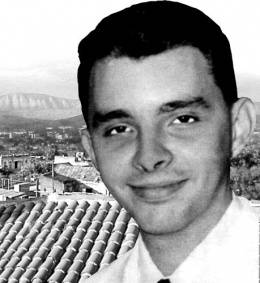 Twenty-two-year-old school teacher Frank Pais (1934-1957) was a student leader in the past who created the National Revolutionary Action organization, and in the July 26 Movement he was responsible for organizing the city’s underground. He was distinguished by his courage and devotion to revolutionary ideals, for which Fidel Castro himself greatly respected him. Frank Pais brought his comrades eight thousand dollars for the purchase of weapons. Frank Pais also said that his comrades in Cuba are ready to come forward at the first signal in order to divert the attention of government troops and the police.
Twenty-two-year-old school teacher Frank Pais (1934-1957) was a student leader in the past who created the National Revolutionary Action organization, and in the July 26 Movement he was responsible for organizing the city’s underground. He was distinguished by his courage and devotion to revolutionary ideals, for which Fidel Castro himself greatly respected him. Frank Pais brought his comrades eight thousand dollars for the purchase of weapons. Frank Pais also said that his comrades in Cuba are ready to come forward at the first signal in order to divert the attention of government troops and the police. Fidel Castro faced a difficult task - to place all potential participants in the planned operation and organize their combat training. Indeed, besides the willingness to sacrifice themselves in the name of the ideals of freedom, the revolutionaries also needed to possess the necessary skills in battle. Few of them had combat experience, so an accelerated training course was superfluous. At the same time, it was worthwhile to take care of proper conspiracy. In different areas of the Mexican capital were removed a few apartments, which placed the fighters. Each apartment was rented for seven to ten people, turning into a kind of dormitory of revolutionaries. Realization of all the everyday needs of the fighters was carried out at the expense of the 26 Movement of July - they were fed, provided with laundry, paper, medicines, and also money for personal expenses. In apartment dormitories, a fairly rigid day regimen was established with regulated lifting, eating and hauling, and school hours. Naturally, the fighters undergoing training should not have had extra contacts with strangers and, moreover, brought them to the apartment. Contacts between members of various battle groups were also forbidden. In the squadron Castro was established military discipline. Fidel himself wore the title "Comandante" - "Major." For many years, this title was the highest in the rebel army, and then in the armed forces of revolutionary Cuba. In addition to Commander Castro, there were six captains and three lieutenants in the detachment.
Preparations for organizing an expedition to Cuba began in advance. It was originally planned that a human 84 will take part in the landing operation. However, two revolutionaries, Pedro Miret and Enno Leyva, were arrested by Mexican police in the capital, Mexico City. During a search, a weapon was found in their home - 4 rifles with optical sights, 3 submachine guns, 17 pistols. The arrested men, Leyva and Miret, did not extradite their comrades, but the number of the detachment was thus reduced by two people. Castro himself was puzzled by the question of who could betray the people of the Mexican police. Suspicion fell on Raphael del Pino. (genus. 1938) - one of the closest associates of Fidel, who served as his bodyguard. Subsequently, these suspicions were dropped, and Rafael del Pino managed to make a great career in the revolutionary Cuban army. He was promoted to the post of commander-in-chief of the country's air force, but in 1987 he fled to the United States and turned into a sharp critic of Communist Cuba’s policies.
Meanwhile, in Cuba, revolutionaries were also preparing for the planned operation. October 28 The 1956 of the year in Havana, in the Montmartre cabaret, was killed by Colonel A. Blanco Riho, who led the military intelligence service of the Cuban armed forces. The assassination of the chief of intelligence of the Batista regime set as its goal to disorganize the control system of the special services and facilitate the conduct of the landing operation.
22 November 1956, Fidel Castro gave orders to all groups of fighters to arrive on the morning of November 24 on the pier of the town of Tuxpan. Subsequently, Ernesto Che Guevara recalled that this order came unexpectedly - apparently, Fidel was afraid of failure and sought to land a ship and go out to sea as soon as possible. A telegram was sent to Cuba stating that the "circulation of the book is sold out." This was a signal to the group of Frank Pais García, which exactly five days after its receipt was to launch an armed uprising against the Batista regime. By the morning of November 24, all participants of the revolutionary detachment arrived in Tuxpan on buses and passing cars.
 Fidel Castro appointed the navigator of the yacht Roberto Roque (pictured) - former naval lieutenant fleet Cuba, who could hold the ship to the island. However, Roque, who had not seen the yacht before, was very disappointed - he told Fidel that the ship would arrive on the island no earlier than five days later. It turns out that Castro’s detachment did not have time to land by the time the Frank Pais uprising began. However, it was decided to act.
Fidel Castro appointed the navigator of the yacht Roberto Roque (pictured) - former naval lieutenant fleet Cuba, who could hold the ship to the island. However, Roque, who had not seen the yacht before, was very disappointed - he told Fidel that the ship would arrive on the island no earlier than five days later. It turns out that Castro’s detachment did not have time to land by the time the Frank Pais uprising began. However, it was decided to act. 25 November 1956, about two o'clock in the morning, the yacht "Granma" left the port of Tuxpan. On board were the 82 people, including such famous revolutionaries as the brothers Fidel and Raul Castro, Ernesto Che Guevara, Camilo Cienfuegos. Of the fighters of the 21 unit, the man had combat experience by participating in the famous assault on the barracks of Moncada. The age of revolutionaries differed. Basically, these were young people 20-30 years. Among the most senior was 53-year-old Francisco Chikola, among the younger ones - 19-year-old Guillen Celaya, a native of Mexico.
November 28 “Granma” entered the Caribbean Sea. The journey was difficult. Most of the fighters of the detachment did not have experience of sea voyages, almost all suffered from seasickness, and Che Guevara had a serious asthma attack. In addition, in the Caribbean, it was just these days that a storm began, and Granma lost its course. Water began to flow into the cabins. Granma's passengers dumped it in buckets. In the end, Fidel ordered to throw overboard all extra loads, leaving only weapons, ammunition and the very minimum of food. Later it turned out that it was not a leak, but a problem with the bathroom system of the yacht.
In Cuba, comrades were already waiting for the arrival of a detachment of revolutionaries. In order to provide the necessary conditions for the landing, local revolutionaries revolted in Santiago de Cuba, Holguin and Guantanamo. At the head of the rebels stood Frank Pais. The group Pais was tasked to divert the attention of government troops. Meanwhile, the squadron Castro and Che Guevara was to calmly land on the Cuban coast. Frank Pais and his associates seized the police headquarters in Santiago de Cuba. A detachment of four hundred poorly armed fighters was able to establish control over the second most important city of Cuba. But Frank Pais was in vain waiting for reinforcements - Castro's detachment lingered. Police and army units of Batista broke into Santiago. In street battles, many fighters of Frank Pais died, and the remnants of the rebels were forced to retreat to the mountains. Subsequently, Fidel Castro repeatedly reproached himself for the uncoordinated organization of the operation, as a result of which the detachment from Granma did not have time to help the rebels of Frank Pais in Santiago de Cuba.
Despite careful conspiracy, the Cuban secret services still learned about the upcoming landing of revolutionaries. But since the provocateur did not have information about exactly which ship and where the squadron Castro would land, the coast guard command was ordered to patrol all coastal waters. It was a more difficult task. And here luck also smiled at Fidel and his companions. At some point, the patrol boat passed alongside the Granma yacht. Seeing his approach in the distance, all the fighters hid in the hold. Only a lone navigator, Roberto Roque, remained on the deck, which, apparently, reassured the border guards - the boat passed by the yacht. A little later, Roque climbed onto the mast of the yacht to get a better view of the horizon. At that moment a wave washed away him. Fidel Castro ordered Granma to be stopped and his comrades searched the Roque for several hours. In the end, the navigator was rescued from the water alive and unharmed. It was another unforeseen stop in the long journey of Granma.
When the yacht was already approaching the coast, she was noticed from a coaster. The captain of the vessel reported to the police, in connection with which Castro ordered to change course and disembark elsewhere. In the end, Granma ran aground. About hundred meters remained to the coast. The boat launched into the water sank, after which the fighters were forced to parachute and ship to the shore, under the throat in the water, carrying a weapon in their arms raised above themselves.
By this time, the yacht found aircraft of the Cuban Air Force. But the squadron Castro has already managed to leave the "Granma". From the approached military boats the fighters opened fire, but they were able to hide in the mangrove swamp. Thus began the landing on Cuba, which ultimately led to the victory of the revolution. The first fight took place on December 5 in the Alegria del Pio area. The revolutionaries retreated to the Sierra Maestra Mountains in eastern Cuba, where they began a guerrilla war that lasted just over two years.

It's been sixty years. Exactly on the sixtieth anniversary of the departure of the yacht "Granma" from the Mexican coast, 25 November 2016, the Cuban leader Fidel Castro passed away. The Aurora of the Cuban Revolution itself is exhibited today in Havana - at the Museum of the Revolution. The official newspaper of the Communist Party of Cuba is named after Granma, one of the Cuban provinces bears the name of the renowned yacht, and Desembarco del Granma National Park is broken at the landing site of the revolutionaries.
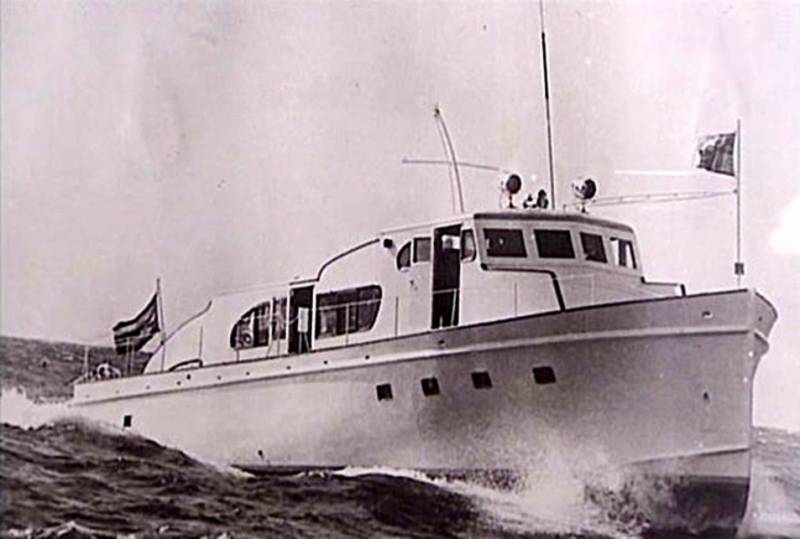
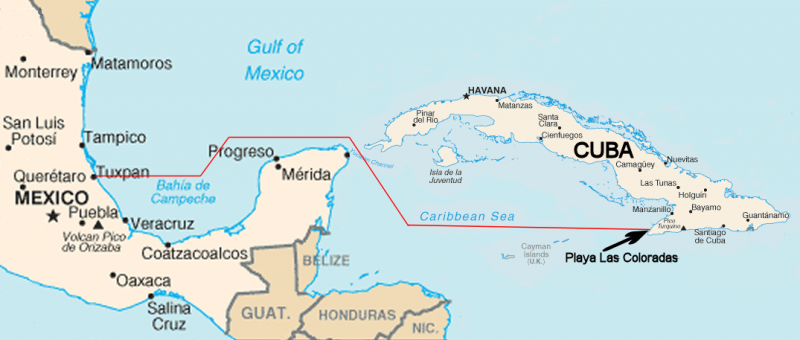
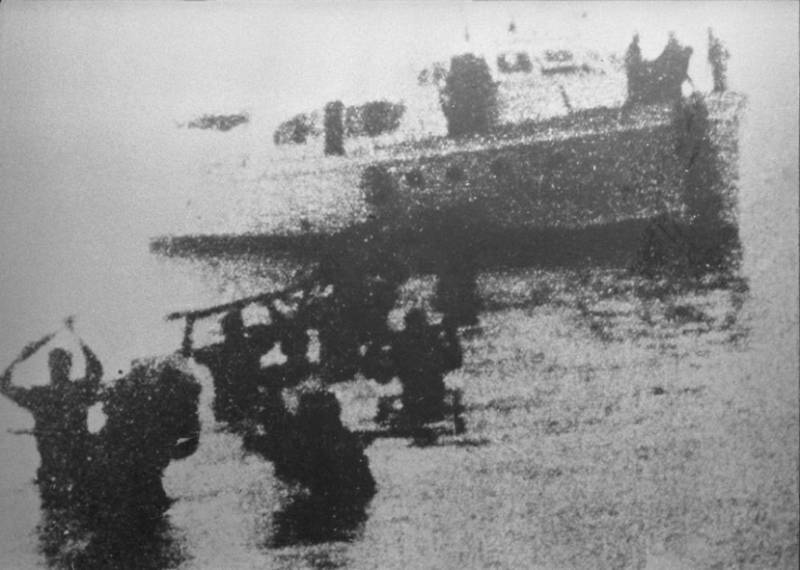
Information